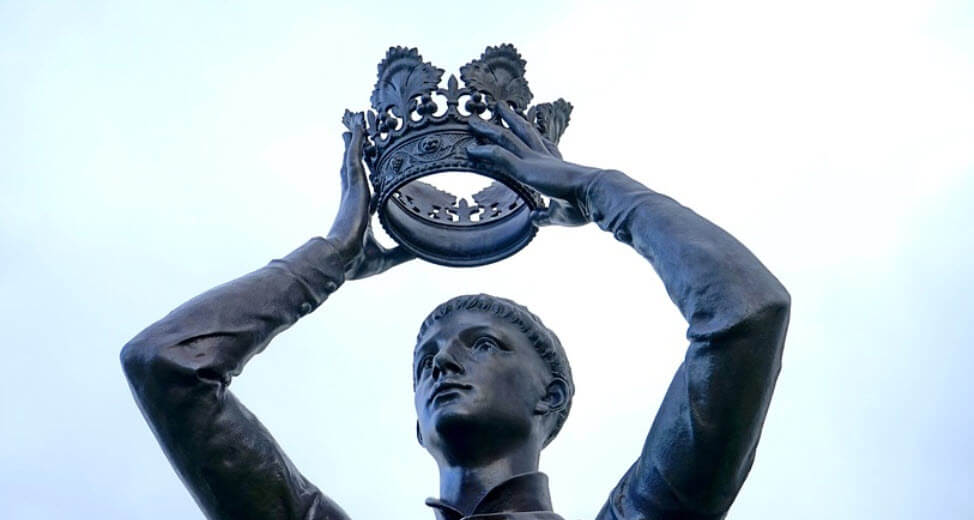What is the analysis, characters, summary and review of William Shakespeare’s Macbeth? Information on William Shakespeare’s Macbeth.

Source: pixabay.com
MACBETH, a tragedy by William Shakespeare, written and produced in 1606, but not printed until the Folio of 1623, which provides the only substantive text. Compliments in the play to King James I, a descendant of Banquo (the supposed progenitor of the Stuart line) and the visit of James’ brother-in-law, King Christian IV of Denmark, make it probable that the composition was at least partly motivated by royal occasion, and modern evidence argues for a performance at Hampton Court on Aug. 7, 1606. The playhouse copy given to the publishers was an acting version with prompt directions, and provided one of the shortest texts of all of Shakespeare’s plays. If abridged and rehandled, it also includes interpolations: the role of Hecate; Act III, scene 5; and parts of Act IV, scene 1 are probably the work of Thomas Middleton. The songs which appear in Macbeth by title only are printed in full in Middleton’s play, The Witch (c. 1615), which has other Shakespearean echoes.
Shakespeare freely adapted the story of Macbeth, 11th century king of Scotland, which he found in Raphael Holinshed’s Chronicles of England, Scotland, and Ireland (1577). Under the circumstances Banquo could not remain an accomplice and a regicide; Duncan, in the original an incapable ruler who fell in battle, in Shakespeare meets his death under conditions applicable to another king in Holinshed. The opening matter is compressed, and the time of action telescoped. Perhaps most important, the supernatural agencies were altered to become the witches of contemporary superstition. The consequence of association with those who sold themselves to the devil was a subject of particular interest to James, who had written a book on demonology. Consequently the first scene of the play, the caldron scene, the appearance of Banquo’s ghost, and Lady Macbeth’s sleepwalking are of Shakespeare’s invention ; indeed Lady Macbeth is only briefly referred to in the Chronicles.
The dramatist’s freedom of treatment clearly shows something of his intention. Macbeth is unlike Shakespeare‘s other tragic heroes. Though he shares with them the qualities of a man of position, stature, and character, he differs in that he knowingly does evil, suffers without repentance, and justly dies for his crimes. Macbeth has free will; his actions are not determined by the unnatural solicitings of the witches, nor by the forceful persuasions of his wife—in Holinshed’s original she is ambitious for herself, but not here. ‘ Macbeth’s actions represent externally what is already in his thought and desire, and the choice of evil is his.
Macbeth is the tragedy of a noble man who goes wrong and pays for it terribly. Consequently, Macbeth is less sympathetic than most of Shakespeare’s tragic heroes, or at least the sympathy aroused is of a different kind. We cannot excuse or condone as we do for a man who is deceived by another or placed in a situation beyond his control, or who makes an error of judgment subsequently regretted. The sympathy arises here from recognitions : of the consequences, the fruitlessness, and the disillusion. The pity is that such a man, in a wider sense man himself, can fall so low; there but for the grace of God go I! There are subsidiary warnings, too: Lady Macbeth cracks under the strain; Banquo strongly suspects Macbeth’s guilt but fails to communicate his suspicions—he, too, pays the penalty. Reprisal is inevitable. The moral lessons are more direct than is usual in Shakespeare’s tragedies.
Macbeth is also perhaps the most atmospheric of the tragedies. Despite the many short scenes, the lack of pace after the swift first three acts, the difficult alternation in the fourth, and the absence of the great closing scene, all of which might make for loss of interest or disintegration, the play is compulsively unified by the evil which broods over it. The imaginative effects are shown in the reactions of minor characters, otherwise undercharacterized; in the wild scenes of the witches’ incantations; in the unnatural violences; in the agonies of Macbeth and his lady; and in the terse and often horrible concentration. The poetic imagery is designed to create or to deepen these effects. Daylight is beneficent, and darkness is hidden evil: Macbeth succumbs to the power of darkness; much of the action takes place at night, a night of sleeplessness, without rest. Blood is everywhere, on the wounded, on weapons, on the besmeared grooms, on Banquo, on Lady Macbeth’s hands; at the end Macbeth is decapitated. The chaos is created by abnormality, and the results are pervasive and overwhelming. No wonder that Macbeth generally makes such a distinctive impression on audiences when it is performed in the theater.
The impression has not always, however, been deep upon audiences, and there is a theatrical tradition that Macbeth is bad luck. There is only one actual record of a performance before the closing of the theaters in 1642. A mangled and spectacularized version by William Davenant (1606-1668), in which Thomas Betterton played, held the stage from the Restoration to the time of David Garrick (1717-1779), who restored some parts but modified others. The true text was not acted until the production by Samuel Phelps in 1847, though Macbeth had already become one of the great roles of William Charles Macready (1793-1873). Notable later Macbeths and Lady Macbeths have included Henry Irving (1838-1905), John Gielgud, Godfrey Tearle (1884-1953), Maurice Evans; and Ellen Terry (1847-1928), Helena Modjeska (1840-1909), Sybil Thorndike, and Judith Anderson. The play is now frequently performed.
mavi